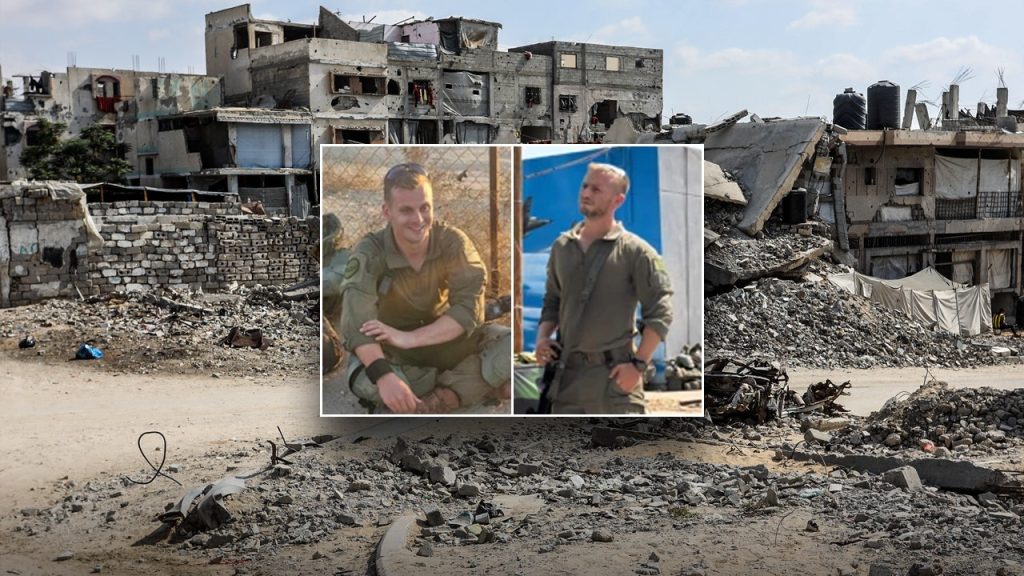Tragedy in Gaza Threatens Fragile Ceasefire
The delicate peace between Israel and Hamas teetered on the edge of collapse following a deadly attack in southern Gaza that claimed the lives of two Israeli soldiers. Major Yaniv Kula, 26, and Staff Sergeant Itay Yavetz, 21, both serving in the 932nd Battalion of the Nahal Brigade, were killed when Hamas militants emerged from a tunnel and opened fire on an excavation vehicle in Rafah. The incident, which also left a reserve soldier severely wounded, represents a significant breach of the recently established U.S.-brokered ceasefire that had temporarily halted the two-year conflict. This tragic event underscores the persistent tensions and deep-seated mistrust that continue to plague the region, even amid international efforts to forge a lasting peace agreement.
The attack prompted an immediate and forceful response from the Israel Defense Forces (IDF), which launched extensive air and ground strikes across southern Gaza. In a demonstration of their resolve to protect Israeli security interests, the IDF reported striking and dismantling six kilometers of underground terrorist infrastructure using over 120 munitions. This network of tunnels had reportedly been used by Hamas to plan and execute attacks against Israel. Simultaneously, Israel announced the suspension of all humanitarian aid to the Gaza Strip—a decision with potentially devastating consequences for the civilian population already suffering from limited access to essential resources. The swift and decisive nature of Israel’s response reflects its commitment to maintaining deterrence while also signaling that violations of the ceasefire would not be tolerated.
According to Professor Kobi Michael, senior researcher at the Institute for National Security Studies, the ceasefire had been fraught with violations since its inception. “This agreement was violated since the first day by Hamas,” he noted, citing incidents where Hamas allegedly sent children to provoke the IDF and test their readiness following the redeployment along the designated security line. Michael described how militants subsequently emerged from tunnels to attack Israeli forces, taking advantage of the IDF’s withdrawal from populated areas. Perhaps most disturbing were his claims that Hamas had been “butchering” civilians suspected of collaborating with Israel or belonging to clans that might oppose their authority in the future. These actions, if true, suggest that Hamas may be using the ceasefire as an opportunity to consolidate power within Gaza rather than as a stepping stone toward genuine peace.
The deeper implications of this latest violation extend beyond the immediate military confrontation. Professor Michael painted a concerning picture of Hamas’s intentions, suggesting that the organization has no plans to dismantle itself or cooperate with international efforts to demilitarize Gaza. “Hamas is still using the tunnels, and intends to reconstruct the tunnels that were destroyed by Israel, because they intend to continue the war against Israel,” he warned. Michael also alleged that Hamas has been actively rebuilding its ranks and reasserting control in the Strip, having “immediately recruited thousands of people.” This assessment, if accurate, casts doubt on the viability of any long-term peace plan that requires Hamas to relinquish power or accept alternative governance structures in Gaza—key components of the international community’s vision for resolution of the conflict.
The human cost of this ongoing struggle extends far beyond the battlefield. The suspension of humanitarian aid following the attack threatens to exacerbate an already dire humanitarian situation in Gaza, where civilians have endured years of hardship amid blockades and periodic outbreaks of violence. The manipulation of hostages—both living and deceased—has become a particularly painful aspect of this conflict, with Professor Michael accusing Hamas of “playing on the nerves of Israeli society” through their handling of captives. Israeli UN Ambassador Danny Danon expressed condolences to the families of the fallen soldiers while reaffirming Israel’s commitment to protecting its security interests. Meanwhile, Professor Michael predicted delays in reopening the Rafah Crossing, a vital entry point for aid and movement that serves as a lifeline for many Palestinians in the region.
In a surprising turn of events, the IDF announced the resumption of the ceasefire later on Sunday, following what it described as a “series of significant strikes in response to Hamas’ violations.” This decision suggests that, despite the severity of the attack and the forceful retaliation, both sides may recognize the catastrophic consequences of returning to full-scale conflict. “The IDF will continue to uphold the ceasefire agreement and will respond firmly to any violation of it,” the military stated, indicating a willingness to maintain the fragile peace while remaining prepared to defend Israeli interests. However, Professor Michael’s assessment that Hamas “does not intend to give up on their position and influence in the Gaza Strip” points to fundamental obstacles that may ultimately prevent a lasting resolution. As the region navigates this precarious path between peace and conflict, the international community watches with concern, hoping that diplomacy might yet prevail over violence in this deeply troubled corner of the world.


